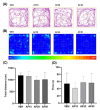The Multitarget Antinociceptive Compound Affinin and Its Effects on Hypothermia, Hypolocomotion, and Sickness Behavior in Lipopolysaccharide-Treated Mice
- PMID: 40572518
- PMCID: PMC12196383
- DOI: 10.3390/molecules30122554
The Multitarget Antinociceptive Compound Affinin and Its Effects on Hypothermia, Hypolocomotion, and Sickness Behavior in Lipopolysaccharide-Treated Mice
Abstract
Affinin (spilanthol) is the main bioactive alkylamide present in Heliopsis longipes roots, exerting antinociceptive and anti-inflammatory effects that involve the activation of TRP channels. Previous studies indicated that affinin reduces the LPS-induced increase in pro-inflammatory cytokine production in murine macrophages. However, no studies have evaluated whether affinin produces antinociceptive, anti-inflammatory, and behavioral effects in experimental animals treated with LPS, nor has the mechanism of action involved in these pharmacological effects been established. The present study evaluated whether affinin induces hypothermia, catalepsy, hypolocomotion, and analgesia and, moreover, whether the analgesia involves the activation of the CB1 cannabinoid receptor and TRPV1 and TRPA1 channels. Subsequently, the anti-inflammatory activity and behavioral effects induced by affinin (20 mg/kg) in mice were evaluated via LPS (2.5 mg/kg)-induced hypothermia. The results of the experiments indicate that the analgesic effect of affinin involves the activation of the CB1 cannabinoid receptors and the TRPV1 and TRPA1 channels. Additionally, affinin reduced the severity of LPS-induced hypothermia and attenuated the increase in TNF-α and IL-6 levels in serum. The results obtained demonstrate that affinin induces antinociceptive, anti-hypothermic, and anti-inflammatory activities, which involve the CB1 receptor and the TRPV1 and TRPA1 channels and the suppression of pro-inflammatory cytokines.
Keywords: CB1; N-alkylamide; TRPA1; TRPV1; affinin; analgesia; anti-inflammatory; hypothermia.
Conflict of interest statement
The authors declare that they have no known competing financial interests or personal relationships that could have appeared to influence the work reported in this paper.
Figures










Similar articles
-
Endothelial TRP channels and cannabinoid receptors are involved in affinin-induced vasodilation.Fitoterapia. 2021 Sep;153:104985. doi: 10.1016/j.fitote.2021.104985. Epub 2021 Jul 5. Fitoterapia. 2021. PMID: 34237389
-
Wu-tou decoction inhibits chronic inflammatory pain in mice: participation of TRPV1 and TRPA1 ion channels.Biomed Res Int. 2015;2015:328707. doi: 10.1155/2015/328707. Epub 2015 Mar 9. Biomed Res Int. 2015. Retraction in: Biomed Res Int. 2025 Aug 07;2025:9874314. doi: 10.1155/bmri/9874314. PMID: 25839032 Free PMC article. Retracted.
-
Affinin, Isolated from Heliopsis longipes, Induces an Antihypertensive Effect That Involves CB1 Cannabinoid Receptors and TRPA1 and TRPV1 Channel Activation.Planta Med. 2024 May;90(5):380-387. doi: 10.1055/a-2244-8855. Epub 2024 Jan 14. Planta Med. 2024. PMID: 38219731
-
Modulation of transient receptor potential (TRP) channels by plant derived substances used in over-the-counter cough and cold remedies.Respir Res. 2023 Feb 8;24(1):45. doi: 10.1186/s12931-023-02347-z. Respir Res. 2023. PMID: 36755306 Free PMC article.
-
Anti-interleukin-13 and anti-interleukin-4 agents versus placebo, anti-interleukin-5 or anti-immunoglobulin-E agents, for people with asthma.Cochrane Database Syst Rev. 2021 Oct 19;10(10):CD012929. doi: 10.1002/14651858.CD012929.pub2. Cochrane Database Syst Rev. 2021. PMID: 34664263 Free PMC article.
References
-
- Castro-Ruiz J.E., Rojas-Molina A., Luna-Vázquez F.J., Rivero-Cruz F., García-Gasca T., Ibarra-Alvarado C. Affinin (Spilanthol), Isolated from Heliopsis Longipes, Induces Vasodilation via Activation of Gasotransmitters and Prostacyclin Signaling Pathways. Int. J. Mol. Sci. 2017;18:218. doi: 10.3390/ijms18010218. - DOI - PMC - PubMed
-
- Rios Y. Natural Alkamides: Pharmacology, Chemistry and Distribution. Drug Discov. Res. Pharmacogn. 2012;244:107–144. doi: 10.5772/32093. - DOI
MeSH terms
Substances
Grants and funding
LinkOut - more resources
Full Text Sources
Medical

